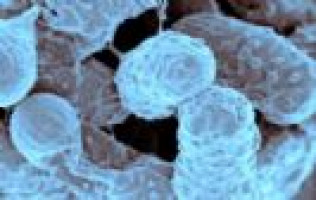
A new study by researchers from the University of Chicago Medicine shows that bacterial signals are crucial to the development of a precursor condition to leukaemia, which can be induced by disrupting the intestinal barrier or by introducing a bacterial infection.
More than 15 percent of people over the age of 60 develop TET2 (tet methylcytosine dioxygenase 2) mutations in hematopoietic stem cells, which give rise to other blood cells. These are known as somatic mutations because they are not inherited, but instead occur by chance with age.
These mutations are passed along to the progeny of the mutated cell during cell division and put these patients at risk for blood cancers.
The TET2 mutation gives the hematopoietic stem cells a competitive advantage over others, so they begin to proliferate and make up a greater percentage of cells that become white blood cells.
This is a condition known as Clonal Hematopoiesis of Indeterminate Potential, or CHIP.
However, the triggers that lead to the progression from CHIP to a precursor condition to leukaemia called pre-leukaemic myeloproliferation are unknown.
The new study, published in Nature, shows that progression from CHIP to pre-leukaemic myeloproliferation is dependent on bacterial signals from bacteria normally present in the gut that spread to peripheral organs.
The authors studied Tet2-deficient mice, which were shown to develop leukaemia with age. However, why only a subset of these mice develop leukaemia was not understood.
The study demonstrated that loss of TET2 expression leads to defects in the intestinal barrier, allowing bacteria living in the gut to spread into the blood and peripheral organs.
The spread of bacteria leads to the release of inflammatory molecules in the blood, which in turn promote the proliferation of haematopoietic stem cells that lack TET2 expression.
This sets the stage for pre-leukaemic myeloproliferation.
"Years before a patient develops cancer, there are changes happening in the background. They still appear healthy until they reach a tipping point," said Bana Jabri, MD, PhD, professor and vice chair for research in the Department of Medicine at UChicago and the senior author of the study. "We have techniques to identify those patients, and now with this paper we know that bacterial signals are key in driving the disease."
Physicians have already developed genetic screening tools to identify patients with CHIP and monitor them, but it is unknown why some go on to develop pre-leukaemic myeloproliferation and others do not.
The new study suggests that misplaced gut bacteria play a role.
Normally common strains of bacteria, such as Lactobacillus, reside happily in the gut and cannot pass through the intestinal barrier.
The research team, led by UChicago postdoctoral scholars Marlies Meisel, PhD, and Reinhard Hinterleitner, PhD, saw that mice with signs of pre-leukaemic myeloproliferation also had gut bacteria that were translocated, or in places they shouldn't be, like the blood and the spleen.
These mice also had elevated levels of an inflammatory protein called interleukin-6 (IL-6) produced by immune cells in response to translocated bacteria.
Breakdown of the intestinal barrier can be caused by a severe gastrointestinal infection.
In this case, however, there were no pathogens that caused such an infection.
Instead, the researchers believe that the TET2 mutations also cause dysfunction in the intestinal barrier, allowing gut bacteria to translocate.
This combination of factors sets the stage for potential leukaemia if the cells accumulate more somatic mutations.
However, the researchers showed that there may be ways to intervene.
Antibiotics and blockade of IL-6 signals reversed the state of pre-leukaemic myeloproliferation in mice that developed symptoms.
Also, germ-free mice with TET2 mutations did not develop symptoms, further underscoring the requirement that bacteria need to be present to drive the development of leukaemia.
Genetic screening can detect TET2 mutations and early signs of changes in hematopoietic stem cells 10 to 15 years before cancer develops.
This means that treatments to block the bacterial signals could reverse pre-leukaemic myeloproliferation and limit the risk for developing cancer.
Jabri said the next step is to conduct studies in humans to see if patients with CHIP and pre-leukaemic myeloproliferation also have signs of bacterial translocation.
Then, clinical trials could test whether treatments that target aberrant IL-6 signals in response to bacteria can reverse its course.
Jabri and hematologist Lucy Godley, MD, PhD, professor of medicine at UChicago and another collaborator on the paper, are continuing to study these links between bacterial signals and pre-leukaemic myeloproliferation in humans.
Combined with increasingly precise genetic screening technology, this could lead to new means of preventing leukaemia.
"There would be a whole new set of ways to follow these patients and see if there are signs of bacterial translocation," they said. "Once we see anomalies in the blood we can now think of intervening and reversing it."
We are an independent charity and are not backed by a large company or society. We raise every penny ourselves to improve the standards of cancer care through education. You can help us continue our work to address inequalities in cancer care by making a donation.
Any donation, however small, contributes directly towards the costs of creating and sharing free oncology education.
Together we can get better outcomes for patients by tackling global inequalities in access to the results of cancer research.
Thank you for your support.